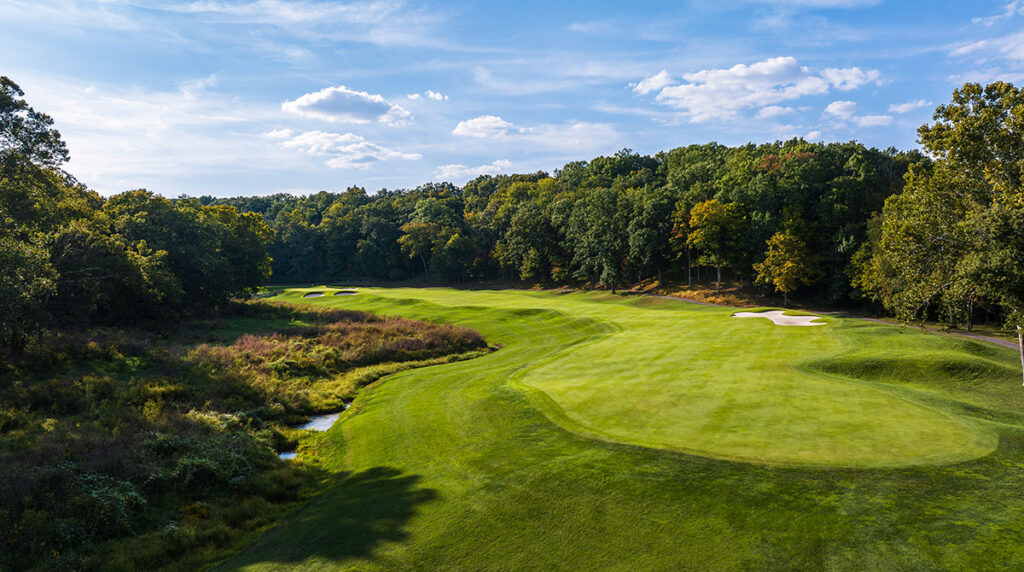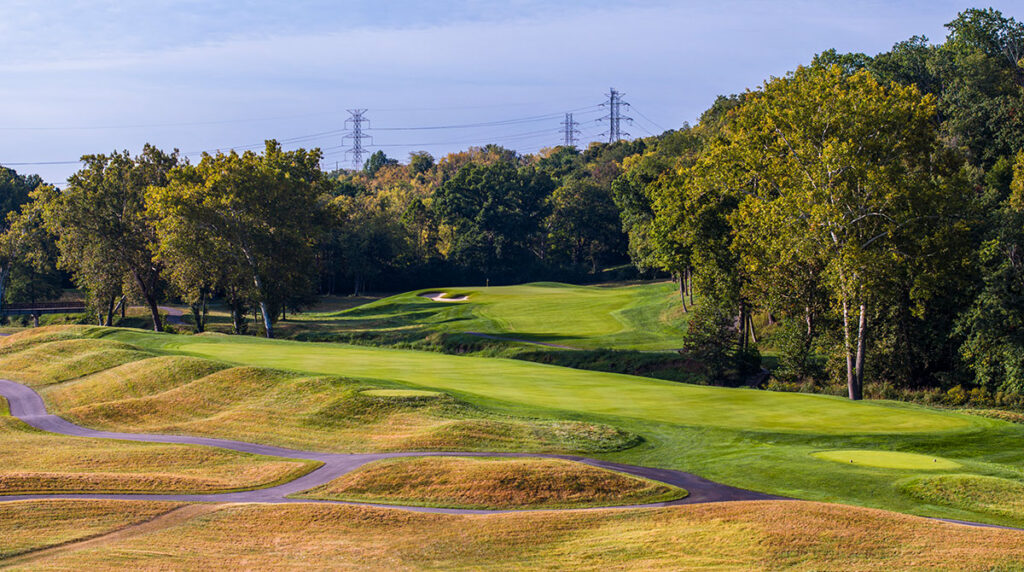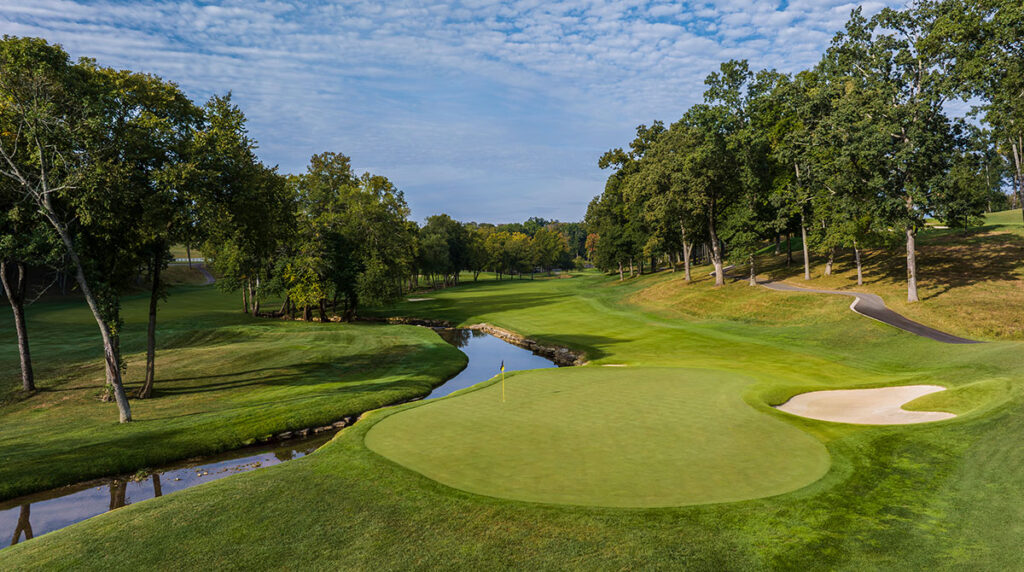The five holes that will decide the PGA Championship.
Photographs by Brian Oar
Valhalla Golf Club outside Louisville in Kentucky, host of the 2024 PGA Championship, is a course defined by rich topographical variety and pointedly modernist architecture. Designed by Jack Nicklaus in the mid-1980s, the layout covers two distinct sections of land: a floodplain in the bend of a river known as Floyd’s Fork and hilly, upland terrain that plunges through hardwoods and former pastureland. The architecture is creative and stern, with defined targets and rewards for powerful driving. Artistic flourishes come in the form of fescue-carpeted mounding throughout the first nine and naturally occurring limestone used to bulwark greens, streams and water features. Previous PGAs at Valhalla – 1996, 2000 and 2014 – finished suspensefully on 18, a reachable par 5 with a split-fairway second shot. Late-game theatrics are certain to be in store again, but to get there players will have to survive these equally distinctive holes.

HOLE 2 / 457 METRES / 500 YARDS / PAR 4
“WINNING COLOURS”
Much of the first nine is constructed to look like rambling Midwestern prairie with the holes switching over former agricultural fields. The second hole occupies a separate environment, levelled into the wooded hillside on the far side of Floyd’s Fork and bending left around a sunken wetland. Members play the double-dogleg as a par 5, but it’s a monstrous par 4 for the PGA Championship, one that registered as the most difficult hole in 2014 with a stroke average of 4.36. Drives must try to push as far into a narrow neck of fairway as they dare while hewing towards the hazard to shorten the approach into a green set over an embankment that falls steeply into a stream.

HOLE 6 / 453 METRES / 495 YARDS / PAR 4
“LONG SHOT”
It sometimes seems the only viable architectural defence in an age of routine 330-yard drives is to cut off the fairway. That’s what the sixth hole does. Floyd’s Fork bisects the hole, capping drives at 300 yards, and any tee shot that goes right or through the fairway tumbles into a deep ravine. Players will club down to put the ball in play, then face an approach of about 200 yards – front hole locations are accessible, but birdies will become scarce the further the flag moves back. This was the second-most-difficult hole in 2014 with a 4.35 stroke average.

HOLE 13 / 321 METRES / 351 YARDS / PAR 4
“THE LIMESTONE HOLE”
The 13th is one of the most unique holes in the PGA Championship rotation. The green is structured like a silo that has been plopped in a moat and shorn a third of the way up, its base ringed in limestone rock while water trickles down a newly constructed façade of limestone to the right. The reason the green is built so high is to keep the putting surface above the floodline because the site is at the lowest point of the second nine. Missing the fairway in the bunkers or bluegrass rough makes hitting the 550-square-metre target more difficult, and most players will hit irons and hybrids for position, though a few will try to hit drives as close to the hazard as possible and pitch on from there.

HOLE 15 / 398 METRES / 435 YARDS / PAR 4
“JULEP”
There aren’t many level stances at Valhalla, but the 15th fairway glides like the smooth backstretch of Churchill Downs along a creek called Brush Run. The creek can catch drives flared right, but its primary role is to set up one of the course’s most exacting second shots as it bows against the front of the angled green before circling around to the right. The approach must find land between a fronting bunker and another bunker left, and a ridge running onto the putting surface creates an elevated back section. Expect to see at least three hole locations set along the right edge of the green where bogeys outnumber birdies at a two-to-one clip.

HOLE 18 / 521 METRES / 570 YARDS / PAR 5
“PHOTO FINISH”
Drives off an elevated tee must find fairway between a bunker and a limestone waterfall hazard. Hole locations on the boomerang-shaped green with three exaggerated levels should impact how players approach the second and third shots, especially if they need to make birdie or eagle. In 1996, Kenny Perry’s bogey here put him in a playoff with Mark Brooks, who finished with a 4 and then birdied the hole again 20 minutes later for his first and only major. Tiger Woods and Bob May both birdied it in 2000 to cap matching 31s on the second nine, then traded pars in their three-hole playoff when May needed another birdie to stay alive. Phil Mickelson closed with a birdie and a final-round 66 in 2014, but Rory McIlroy, playing in near darkness and hitting up while Mickelson waited to play his third shot, made a par from the left greenside bunker to win by one.



